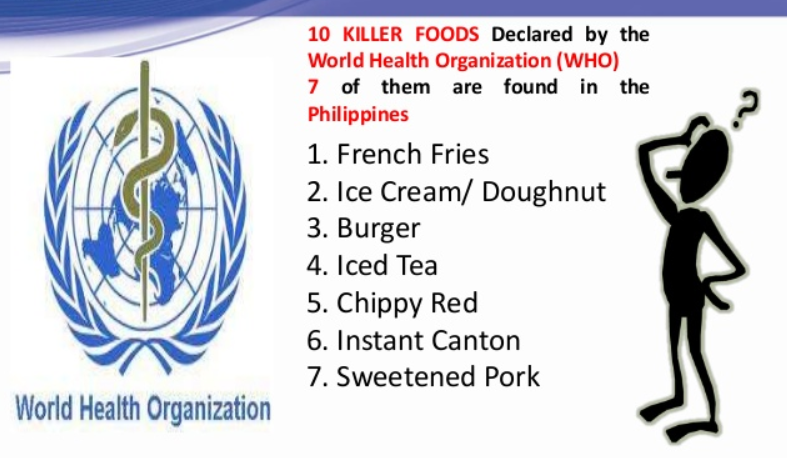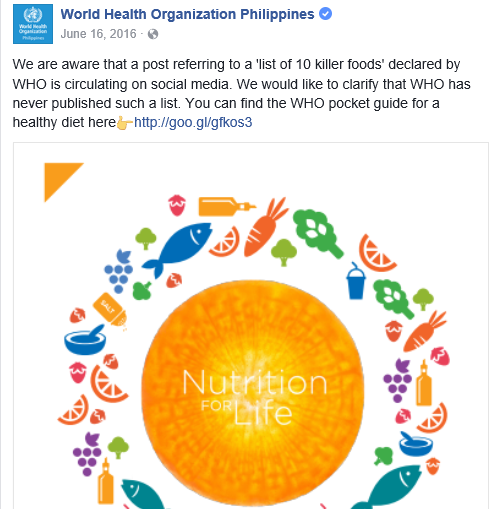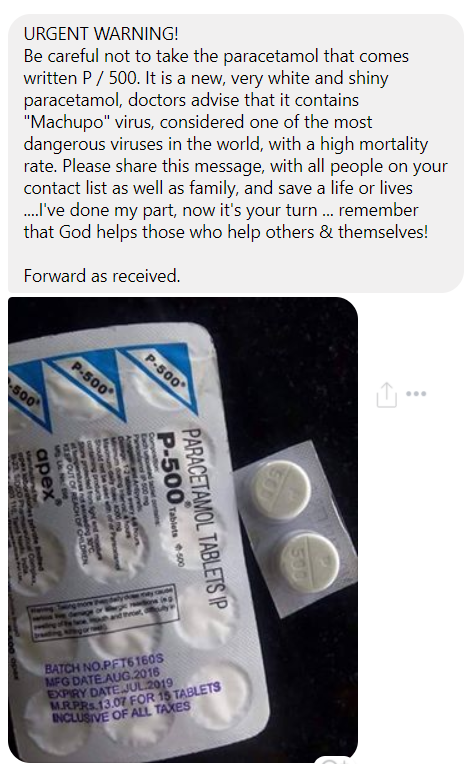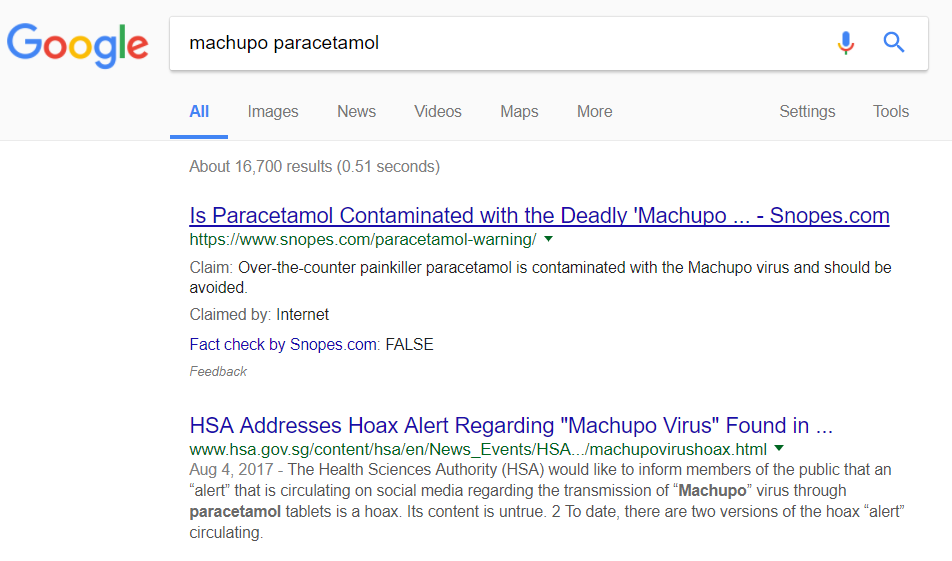By: Mark Christofer Manalo
I do not spend much time on social media. The utility of sharing personal information and pictures of one’s lunch escape me. But in the few times I checked out Facebook, I was greeted with two blatantly false stories that were passed around as “health news.” And by blatantly false, I mean that in an easily-disproven, just-a-Google-search-away, top-search-results kind of way.
The first one had a ring of truth to it: 7 of 10 Killer Foods declared by the World Health Organization (WHO) are found in the Philippines. It goes on to list the following foods: French fries, ice cream/doughnuts, burgers, iced tea, sweetened pork, instant noodles (pancit canton), and, perhaps most surprisingly, Chippy red. There are other versions of this list out there, with others omitting Chippy. But the one circulating on social media almost always has that local snack brand.

A cursory glance at the list reveals this to be fake. For one, why would the WHO single out a specific brand of chips as a “top 10 killer food?” Why the red Chippy, and not the blue one? Why Chippy, for that matter? Why not, oh I don’t know, Lay’s Classic Potato Chips? Those come in much bigger bags and are more widely available than Chippy, which I assume makes it as much, if not more, of a health hazard than Chippy.
And whatever happened to the other three “killer foods?”
What made that post even more confounding was that it was so easy to debunk. One does not even need to do a web search to check if the WHO indeed came up with a list top 10 of “killer foods.” The answer is right there in Facebook – in the World Health Organization page!

In a June 16, 2016 post, the WHO states “we are aware that a post referring to a ‘list of 10 killer foods’ declared by WHO is circulating on social media. We would like to clarify that WHO has never published such a list.”
But this statement, or plain commonsense, never stopped that list from spreading. Not only did I find that on social media, I also came upon pictures of what looked like a slideshow presentation. In fact, this picture is what was included in the Facebook post I came upon. A quick web search shows that this was probably from a presentation by a multi-level marketer (I archived the site here). So a fake story started on the web, circulated on social media and also ended up on a sales/recruitment presentation, lending it a patina of respectability. Wow.
The other mind-numbingly fake “health advice” I came upon was that certain kinds of paracetamol tablets are contaminated by a virus: Be careful not to take the paracetamol that comes written P / 500. It is a new, very white and shiny paracetamol, doctors prove to contain “Machupo” virus, considered one of the most dangerous viruses in the world. And with high mortality rate. Please share this message, for all people and family.

This. Does. Not. Make. Sense.
I think it is extremely improbable that this “contamination” happened but there was no news coverage. One would think that the TV networks – they who unceasingly cover even the pettiest of crimes – would be all over this “news.” It is also extremely improbable that there was no recall of these “contaminated” tablets. Also, viruses probably will not survive the manufacturing process and the duration of a typical tablet’s shelf life.
Yet again, a quick search reveals that this hoax is not new. Although I only got that message this year, that particular machupo hoax has been around since early 2017, according to Snopes. Like the fake WHO list, it was not particularly difficult to fact check that one, as Googling “machupo paracetamol” yields that specific Snopes article on the very first search result.

One thing both bogus “news” posts have in common is a grain of “truthiness.” After all, who would argue that any of those seven killer foods are healthy? It is probably for the best if we consume less of those. As for the paracetamol hoax, the image included with the post is a strip of tablets made by Apex Laboratories Private Limited, an Indian pharmaceutical company. There may be a tinge of xenophobia here, but if the image were of a familiar local brand, I suspect people would reject the claim outright. But since it is an unknown foreign brand, maybe, just maybe, the post could be true.
These are hardly the worst health and safety related posts in social media. Some try to convince parents to avoid vaccines, some claim various remedies for cancer, among others. And no matter how many times they get debunked, these claims get recycled over and over and over, ad nauseam. As far as I can tell, the earliest version of that “killer foods” list was in 2010. That Machupo hoax started early 2017, according to Snopes. These false claims just will not die.
Lots of internet ink has been spilled over fake news and how to prevent them from spreading, with some discussing the illusory truth effect, implicit/confirmation bias, and echo chambers. Perhaps one thing that would help is to avoid social media. Not only would you minimize exposure to fake news, it would also improve your mental health. If that seems too difficult, at the very least, if something sounds too good or too incredible to be true, please don’t forward it.







